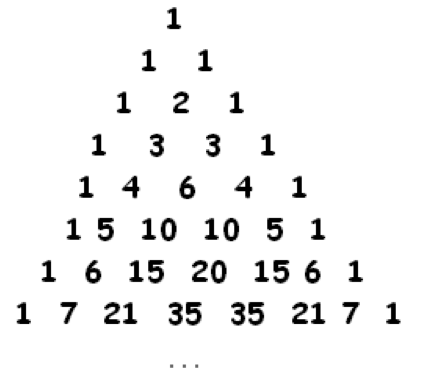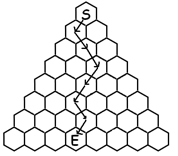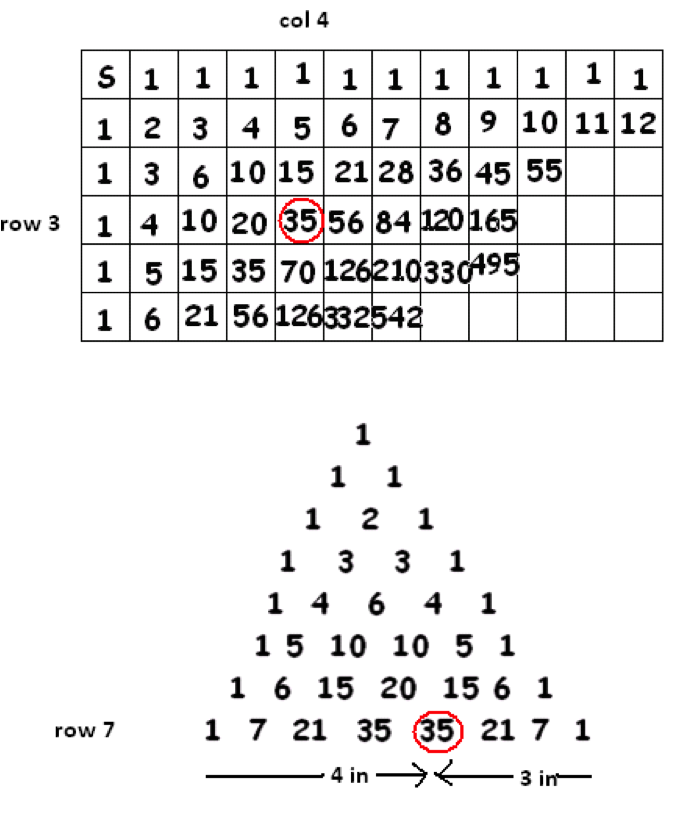Permutations and Combinations
3.3 Pascal’s Triangle
Lesson materials located below the video overview.
Turn the grid of numbers forty-five degrees to make a triangle of numbers:

The grid presented this way made famous by French mathematician Blaise Pascal (1623-1662) for his work in probability theory.
Each row of this triangle is a diagonal of the original grid and each entry in the triangle counts paths. (If you like, we can make this explicit by counting downward moving paths in a honeycomb.)

As before,
EACH INTERIOR ENTRY OF PASCAL’S TRIANGLE IS THE SUM OF THE
TWO ENTRIES ABOVE IT
We also have formulas for the individual entries of Pascal’s triangle. The entry that was in the \(a\)th row and \(b\)th column in the original grid (starting our counts with zero-th rows and zero-th columns) is now in the \((a+b)\)th row of Pascal’s triangle, \(a\) places in from the left and \(b\) places in from the right along that row.

Regard the top row (consisting of the single 1) as the zero-th row of the triangle. The formula for the entry on row \(n\), \(a\) places in from the left and \(b\) places in from the right is:
\(\dfrac{n}{a!b!}\).
(And \(n\) does equal \(a+b\).)
Resources
Books
Take your understanding to the next level with easy to understand books by James Tanton.
BROWSE BOOKS![]()
Guides & Solutions
Dive deeper into key topics through detailed, easy to follow guides and solution sets.
BROWSE GUIDES![]()
Donations
Consider supporting G'Day Math! with a donation, of any amount.
Your support is so much appreciated and enables the continued creation of great course content. Thanks!
Ready to Help?
Donations can be made via PayPal and major credit cards. A PayPal account is not required. Many thanks!
DONATE![]()


